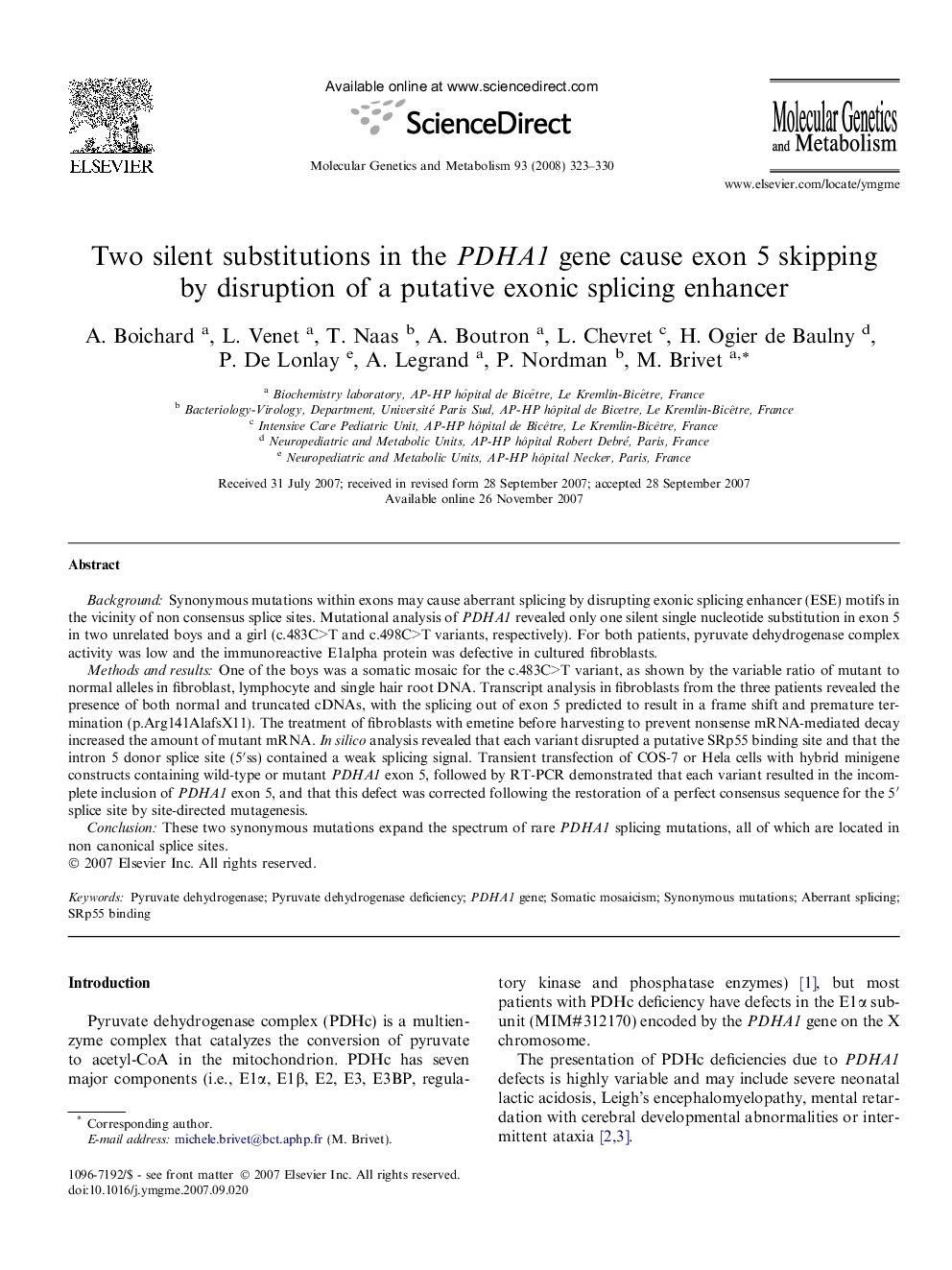| Article ID | Journal | Published Year | Pages | File Type |
|---|---|---|---|---|
| 2000107 | Molecular Genetics and Metabolism | 2008 | 8 Pages |
BackgroundSynonymous mutations within exons may cause aberrant splicing by disrupting exonic splicing enhancer (ESE) motifs in the vicinity of non consensus splice sites. Mutational analysis of PDHA1 revealed only one silent single nucleotide substitution in exon 5 in two unrelated boys and a girl (c.483C>T and c.498C>T variants, respectively). For both patients, pyruvate dehydrogenase complex activity was low and the immunoreactive E1alpha protein was defective in cultured fibroblasts.Methods and resultsOne of the boys was a somatic mosaic for the c.483C>T variant, as shown by the variable ratio of mutant to normal alleles in fibroblast, lymphocyte and single hair root DNA. Transcript analysis in fibroblasts from the three patients revealed the presence of both normal and truncated cDNAs, with the splicing out of exon 5 predicted to result in a frame shift and premature termination (p.Arg141AlafsX11). The treatment of fibroblasts with emetine before harvesting to prevent nonsense mRNA-mediated decay increased the amount of mutant mRNA. In silico analysis revealed that each variant disrupted a putative SRp55 binding site and that the intron 5 donor splice site (5′ss) contained a weak splicing signal. Transient transfection of COS-7 or Hela cells with hybrid minigene constructs containing wild-type or mutant PDHA1 exon 5, followed by RT-PCR demonstrated that each variant resulted in the incomplete inclusion of PDHA1 exon 5, and that this defect was corrected following the restoration of a perfect consensus sequence for the 5′ splice site by site-directed mutagenesis.ConclusionThese two synonymous mutations expand the spectrum of rare PDHA1 splicing mutations, all of which are located in non canonical splice sites.
